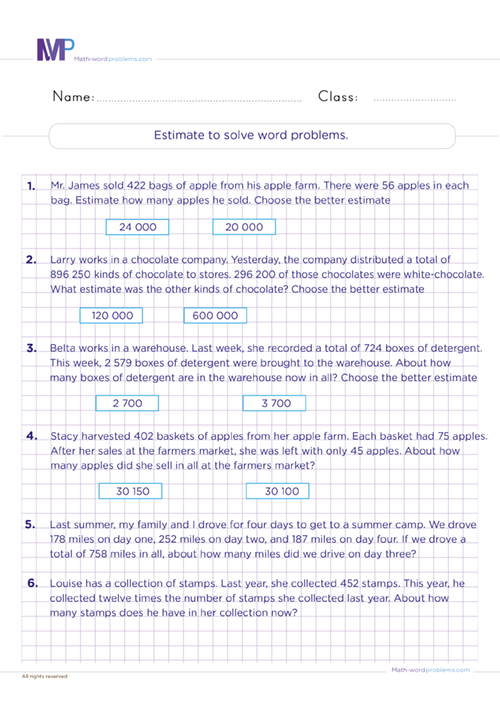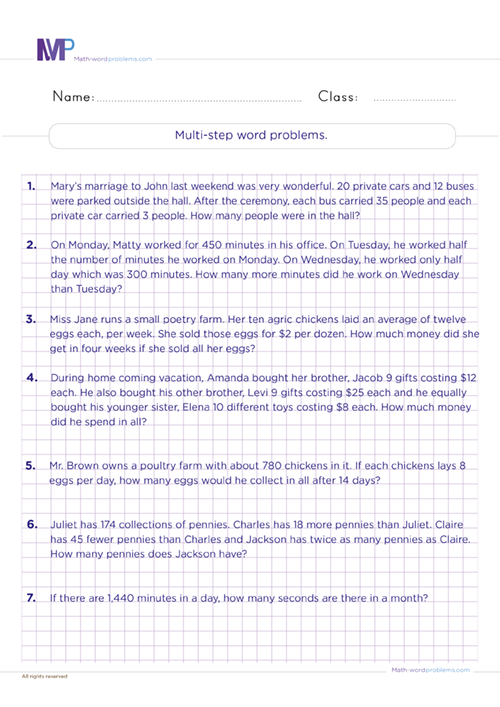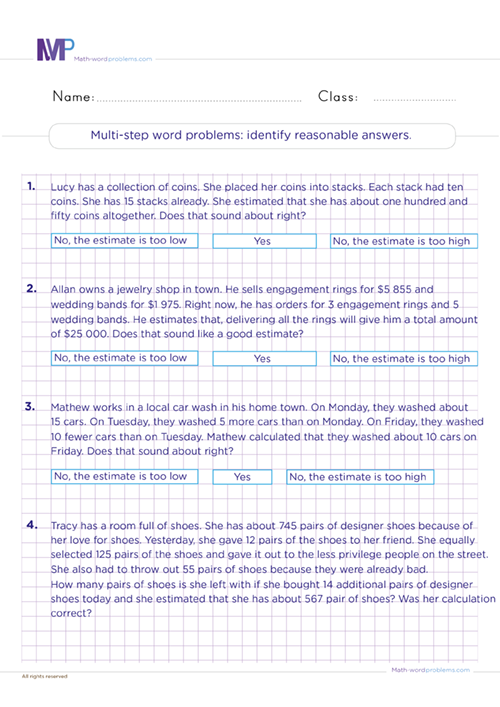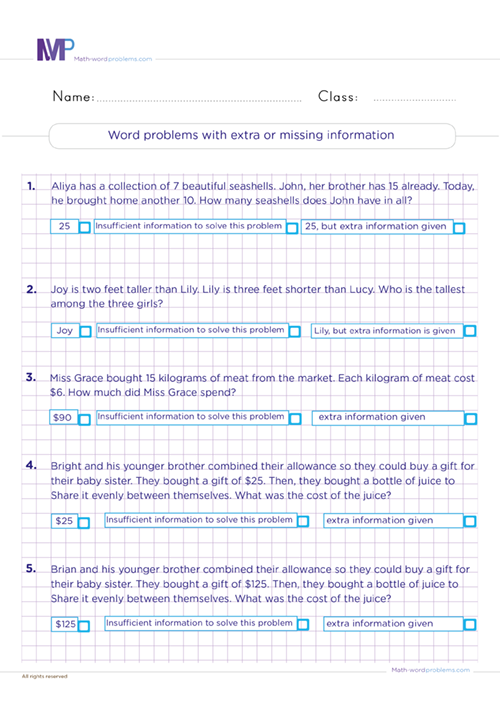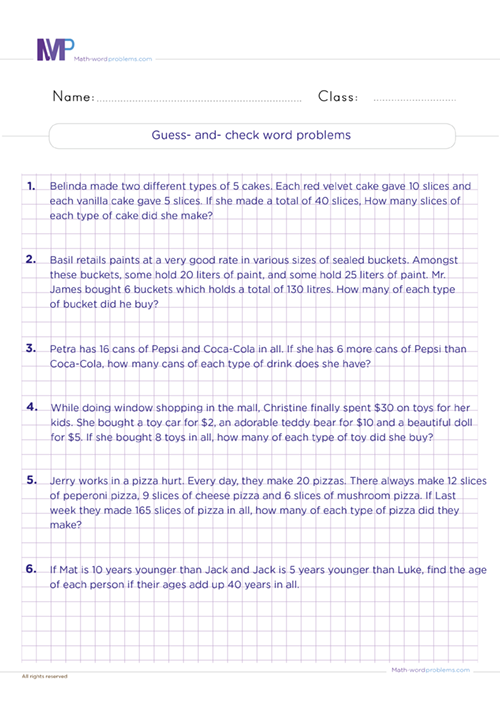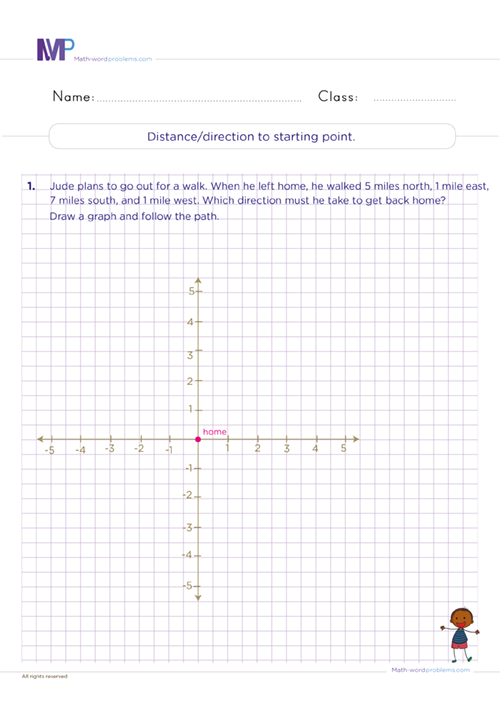 Solving and estimation worksheets Grade 6
Solving and estimation worksheets Grade 6

- INTRODUCTION
- Download worksheets
- Related Contents
- What is the general rule for quick solving and estimation wo...
Get more contents on Solving And Estimation Word Problems...
Your 6th graders will learn to guess reasonably vividly as they engage in our solving and estimation worksheets Grade 6. In situations where accuracy is unnecessary, we can approximate to ease and shorten our work. In other words, estimation means approximating a quantity to the required accuracy. We achieve such answers by rounding the numbers in the calculation up or down to get a quick and rough answer.
One thing to note about estimation here is that, usually, when we have the exact solution to something, we use the "equals" (=) symbol, but when we make an estimate or determine an approximate answer, we use the "approximately equals" (≈) symbol. This means that the answer is not exact, but its nearness to the appropriate answer is actual.
Thus our worksheets consist of different estimation methods depending on the type of problem and level of accuracy we need. Some common methods of estimation that your 6th graders will enjoy practicing in these solving and estimation worksheets include; estimate to solve word problems, word problems with extra or missing information, multi-step word problems, identifying reasonable answers, guest and check word problems, distance direction to starting point word problems, etc.
Estimation questions and answers Grade 6
Find a quick way to enhance your kid's mental and estimation skills with these simple, ready-to-solve estimation questions and answers Grade 6. These estimation questions and answers are smartly designed to build kids' confidence in estimating basic quantities in math and real life, like time, sum, difference, product, and quotient.
Undoubtedly, your kids will have an enjoyable time as they engage in our solving and estimation worksheets Grade 6. This is because most of our estimation questions relate to daily situations requiring us to make quick and wise decisions. For instance, you can use estimation to compare prices when shopping for groceries to find the best deals.
Also, we use estimation for budgeting money and planning expenses. For example, if your monthly income is about $2,500, and your rent is about $6,800, you can estimate what you'll have left for other expenses after paying rent.
In addition, we use estimation to measure things that are difficult or impossible to give exact measures, for instance, the weight of a child, the height of a tree, the speed of a car, etc. however, you can only use indicators like your own height, a scale, or a stopwatch to make reasonable guesses.
Considering that we can estimate without necessarily doing a lot of calculations, you'll be able to quickly check your answers for accuracy and reasonableness. Hence, it can help you save time, money, and effort to communicate your ideas better.
What is the general rule for quick solving and estimation worksheets Grade 6?
What is the general rule for quick solving and estimation worksheets Grade 6? People use different ways to solve estimation problems. But this resource will offer you the most straightforward rules to follow while solving estimation worksheets Grade 6.
The general rule of estimation is to round the numbers involved in the calculation up or down to the nearest place value that makes sense. For instance, if you are estimating how many plates can be enough for 450 people, you can round off the number of people to the nearest hundred.
How do we round off numbers? Rounding, as a primary estimation method, involves changing the digits of a number to make it simpler and easier to work with. For example, if we want to estimate the sum of 42 + 47, we can round both numbers to the nearest ten and get 40 + 50 = 90. This is a close estimate of the actual answer, which is 89. So, as you can see, estimation is not just guessing. It is a way of using logic and mental math to find approximate answers that make sense.
Above all, our objective in this resource is to provide outstanding estimation problems that will enhance kids' number sense skills, as they will often round, compare, and order numbers.
However, while practicing this concept constantly, you'll realize that estimation depends on the type of problem and the level of accuracy needed.

